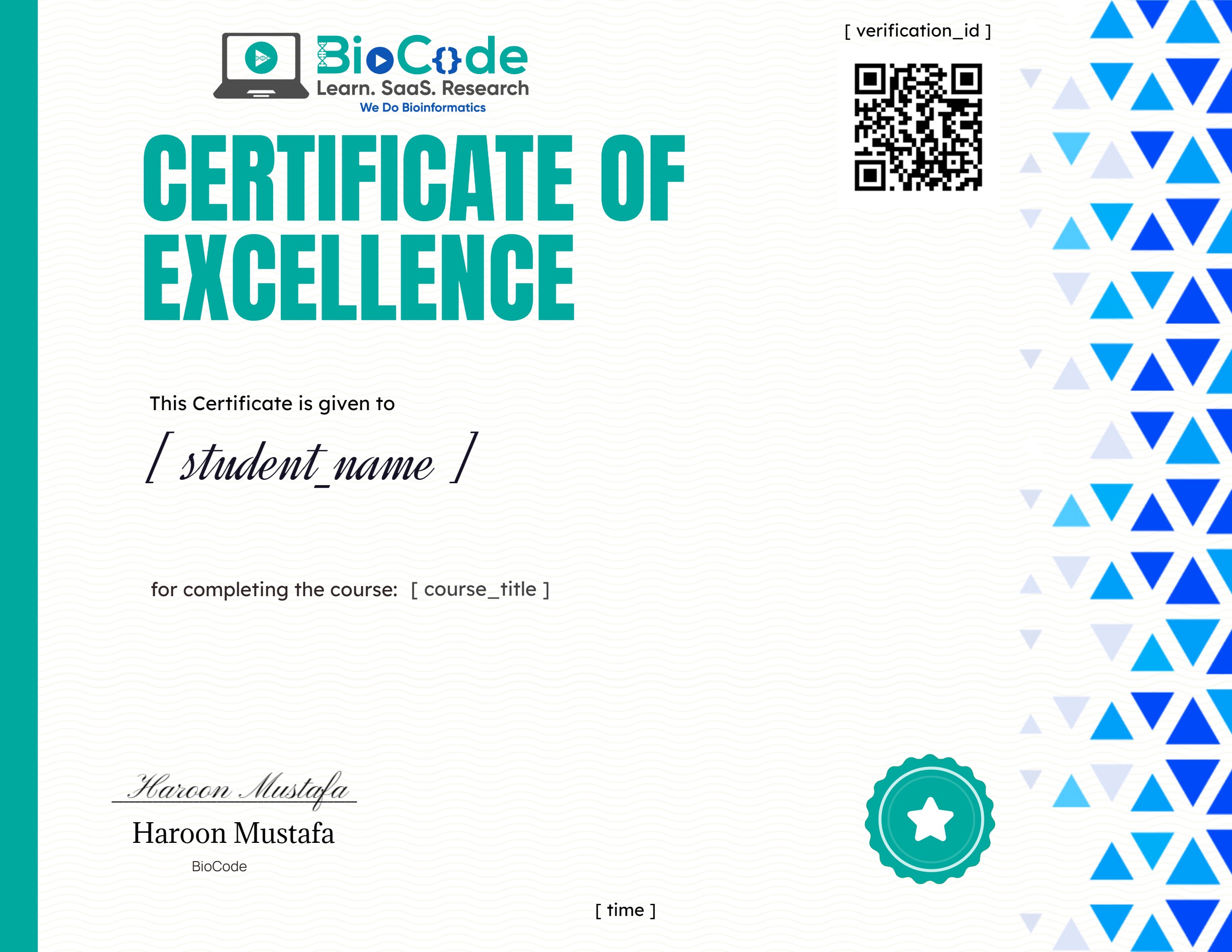Hands-on Guide on Computational Vaccinology and Chimeric Vaccines
About Course

Vaccine development has been very successful in the prevention of highly contagious or serious disease. Vaccines are the most cost-effective public health interventions. Chimeric vaccines are types of recombinant vaccines, produced by substituting genes from the target pathogen in a closely related organism, for similar genes.
Chimeric vaccines are useful in studying infectious diseases, including many neglected diseases. Immuno-Bioinformatics is being extensively used in designing B-, T-cell epitopes, vaccines, antibodies, adjuvants, diagnostic kits, and therapeutics. Bioinformatics is also involved in medication development aimed at bio-productive and pharmaceutical/vaccine development.
You don’t need any prior Bioinformatics, programming or immunoinformatics knowledge or skills for this course. This hands-on course will help you construct vaccines using subtractive genomics and reverse vaccinology techniques, even if you lack a proper understanding of the underlying concepts of Bioinformatics databases, servers, tools and the algorithms working behind them.
In the Computational Vaccinology and Chimeric Vaccines course, you will be learning how to develop a vaccine against Dracunculus medinensis which causes guinea worm disease in humans. The video lecture series will take you from the basics such as proteome retrieval of Dracunculus medinensis and all the way to computational development of a chimeric vaccine.
This course will include the following sections:
Section 1: Target Identification
Description: This section will focus on making sure that the students learn about how to identify the target in order to start the process of computational construction of vaccines.
Learning Outcomes: Upon completion of this section, students will be able to:
- Select the target for the vaccine.
- Remove duplicates from the retrieved biological data.
- Screen Non-homologous Proteins.
Section 2: Immunoinformatics Approach for Epitope Prediction
Description: In this section students will learn how to use immunoinformatics approaches in order to perform epitope prediction. Immunoinformatics approaches are both cost-effective and convenient.
Learning Outcomes: Upon completion of this section, students will be able to:
- Screen Antigenicity of Protein.
- Predict Linear B-Cell Epitope.
- Assess Linear B-Cell Epitope.
- Predict CTL Epitope.
Section 3: Computational Construction of the Vaccine
Description: In this section students will be able to understand and learn the assessment and prediction necessary in order for the construction of the vaccine.
Learning Outcomes: Upon completion of this section, students will be able to:
- Assess CTL Epitope.
- Predict and Assess HTL Epitopes.
- Map Vaccine Construct.
- Perform Secondary and Tertiary Structure Prediction of Vaccines.
- Tertiary Structure Refinement And Validation.
- Predict Discontinuous B-Cell Epitope Prediction.
Section 4: Molecular Dynamics and Immune Simulation
Description: In this section students will learn how to perform molecular dynamics and immune simulation on the constructed vaccine to see if it stays stable.
Learning Outcomes: Upon completion of this section, students will be able to:
- Perform Molecular Dynamic Simulation.
- Perform Immune Simulation.
- Perform In Silico Cloning.
Section 5: Supplementary 1
Description: In this section students will learn how to perform codon optimization in order to improve the efficacy of vaccines.
Learning Outcomes: Upon completion of this section, students will be able to:
- Perform Codon Optimization.
Section 6: Supplementary 2
Description: In this section students will learn how to perform disulfide engineering on the vaccine protein to improve protein stability.
Learning Outcomes: Upon completion of this section, students will be able to:
- Perform Disulfide Engineering.
Section 7: Supplementary 3
Description: In this section students will learn how to dock TLR4 receptor with a protein in order to assess the binding affinity between the vaccine construct and TLR4.
Learning Outcomes: Upon completion of this section, students will be able to:
- Perform Molecular Docking between TLR4 and a protein.

Course Content
Target Identification
-
Target Selection
03:20 -
Removing Duplicates
03:46 -
Screening Non-homologous Proteins
06:42
Immunoinformatics Approach for Epitope Prediction
Computational Construction of the Vaccine
Molecular Dynamics and Immune Simulation
Supplementary 1
Supplementary 2
Supplementary 3
Earn a certificate
Add this certificate to your resume to demonstrate your skills & increase your chances of getting noticed.

